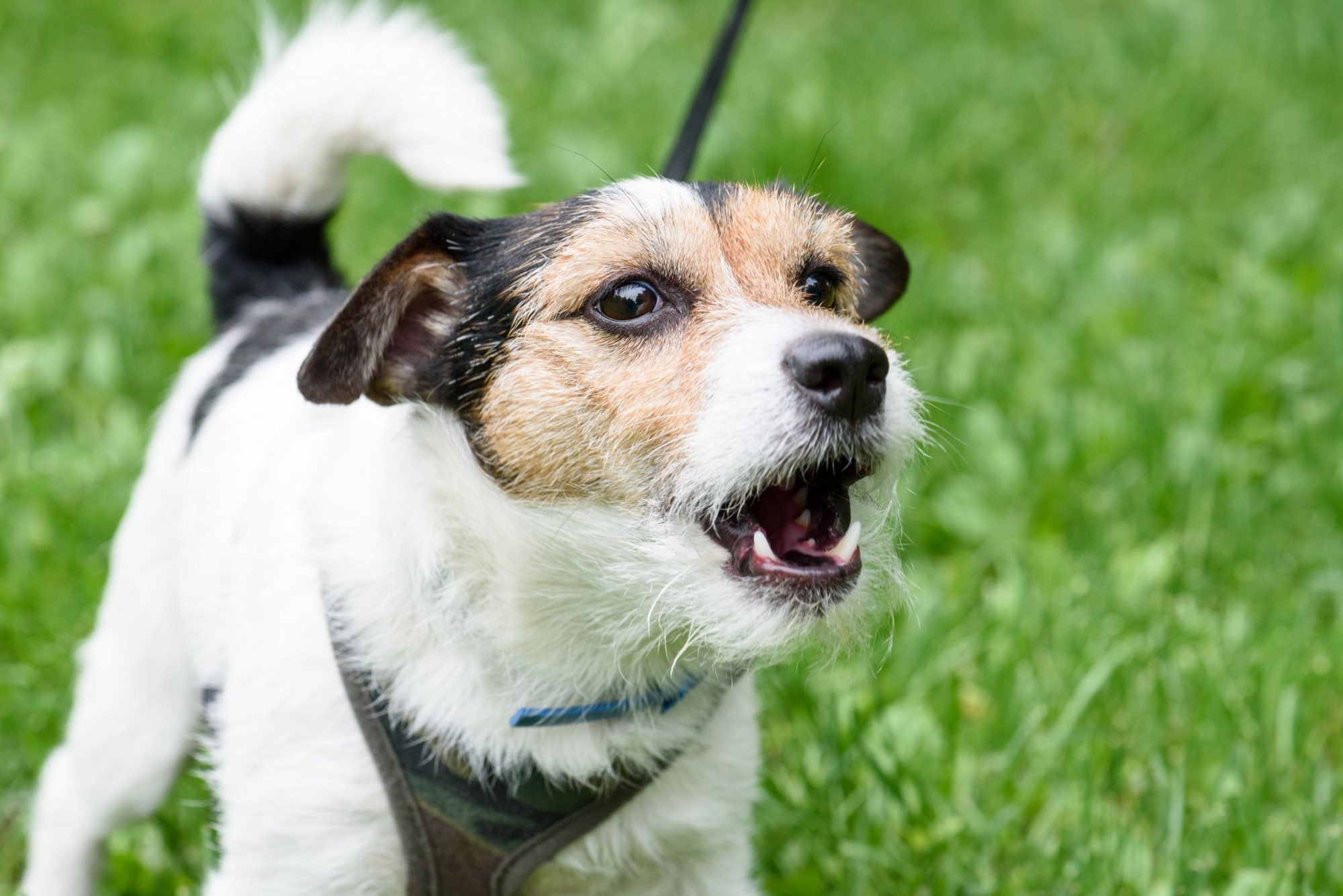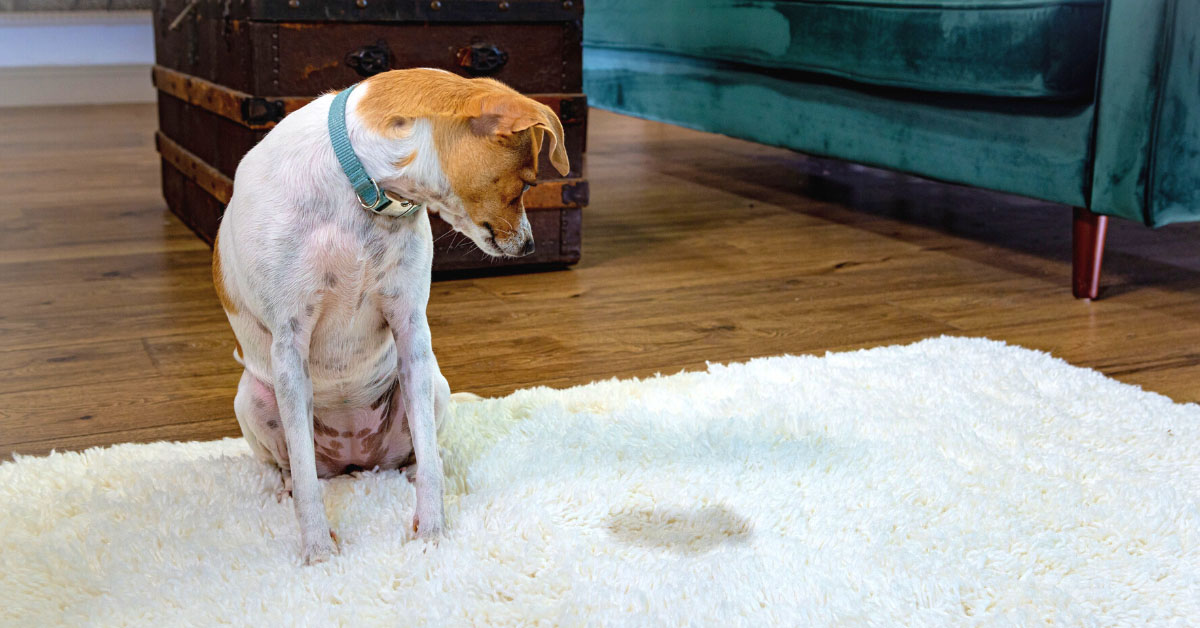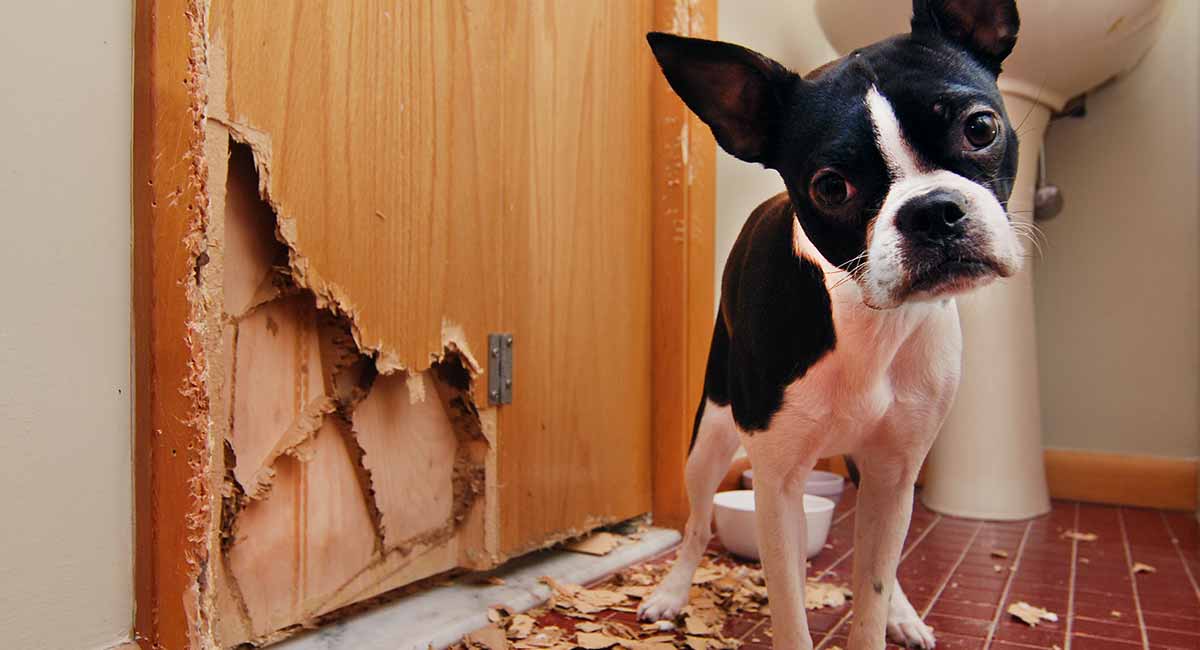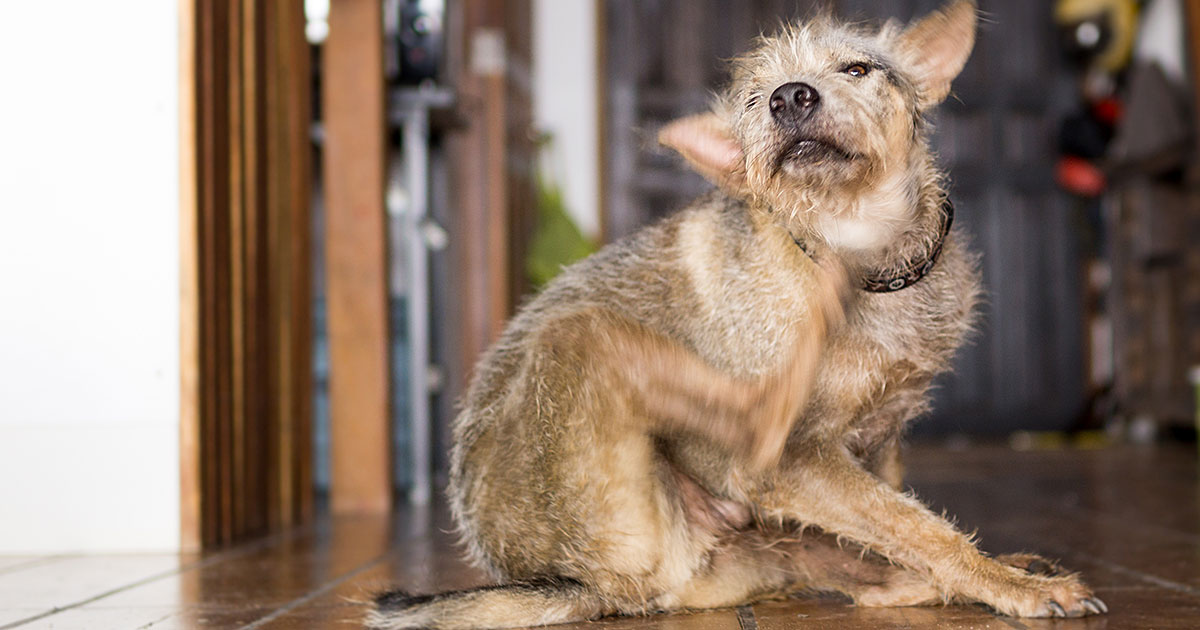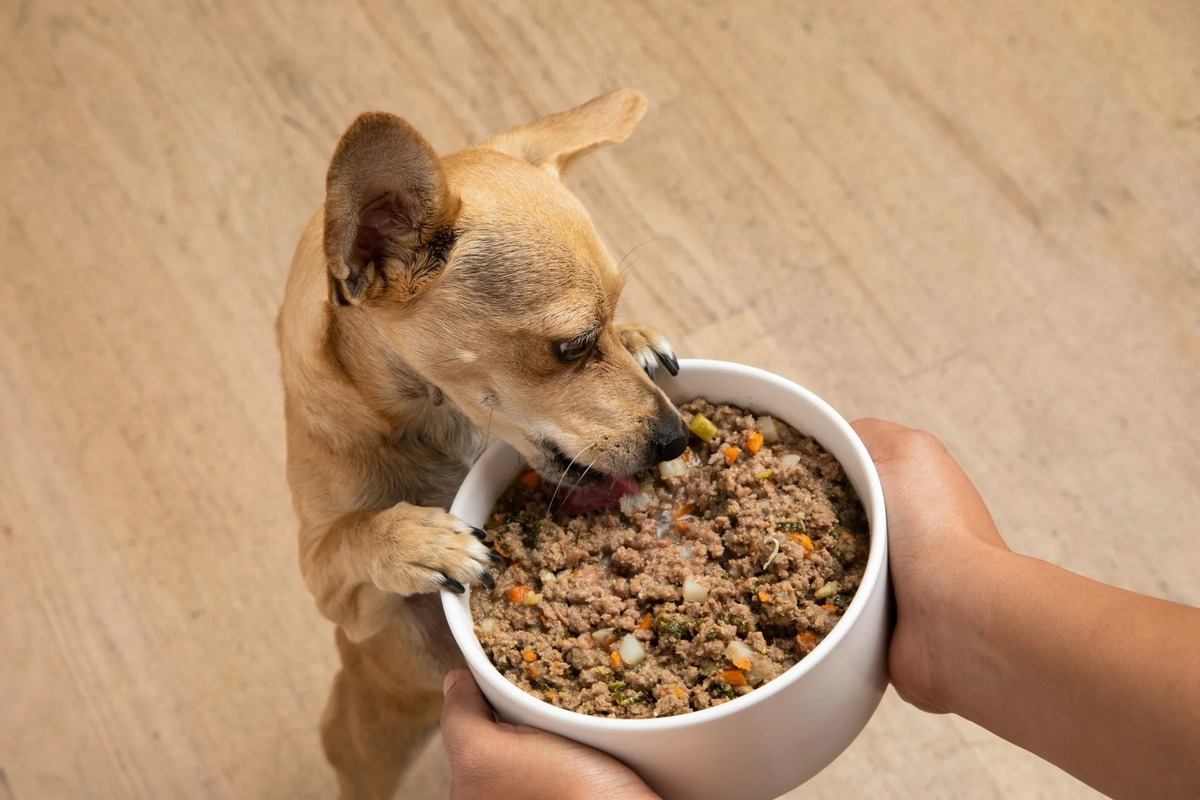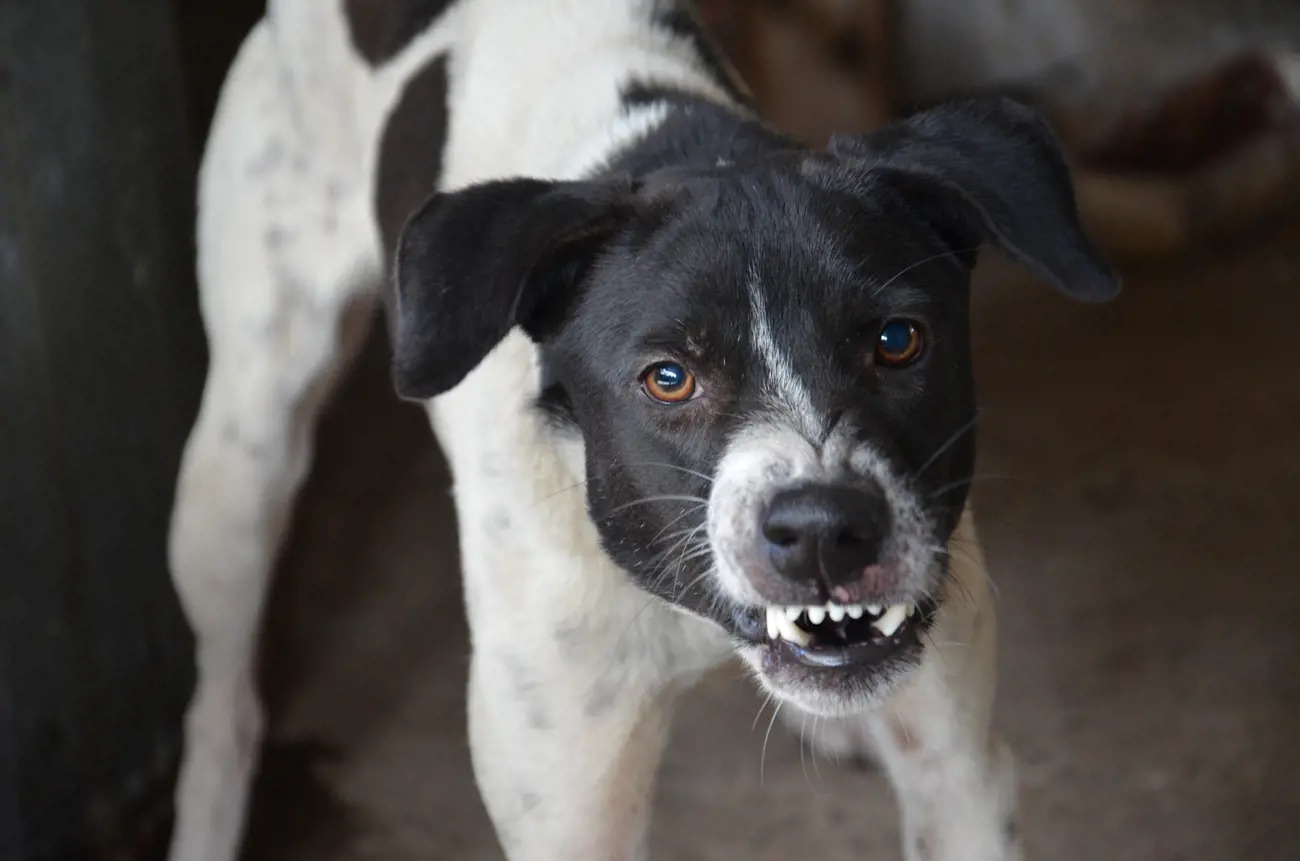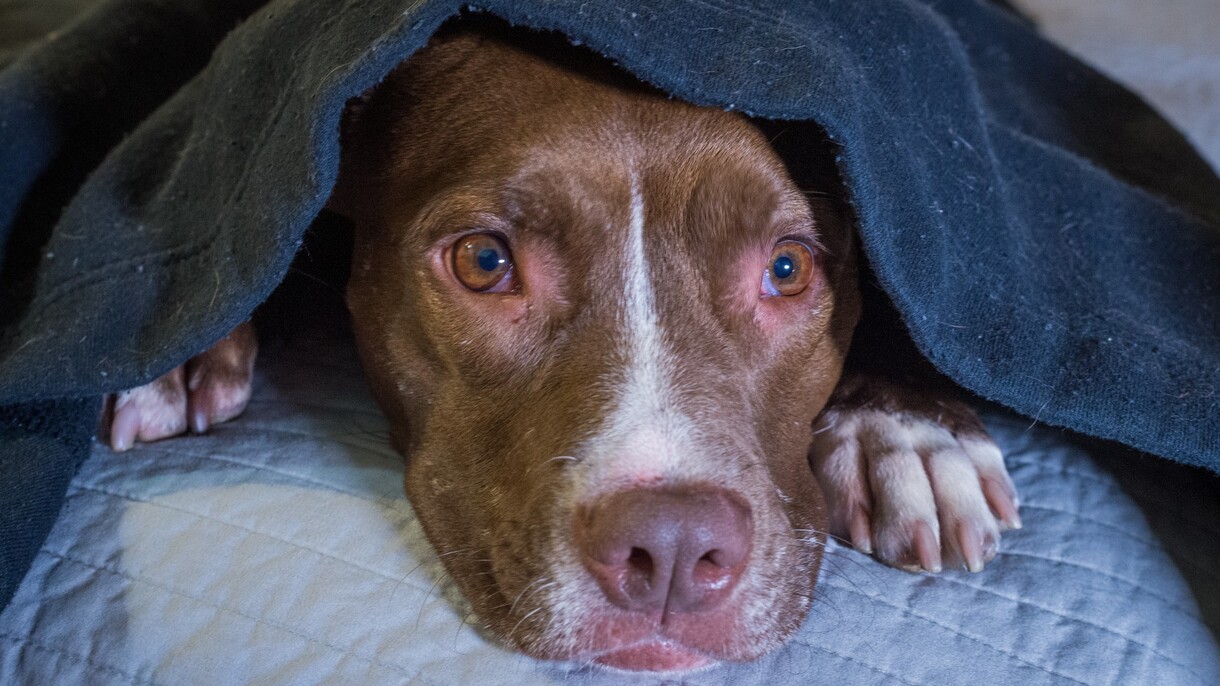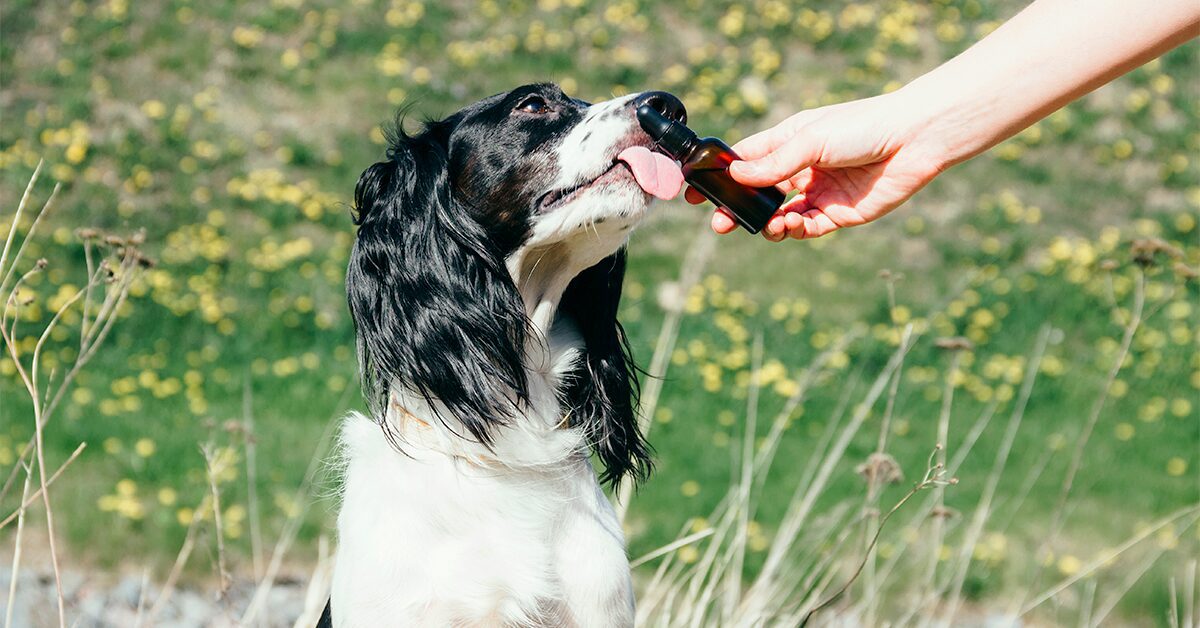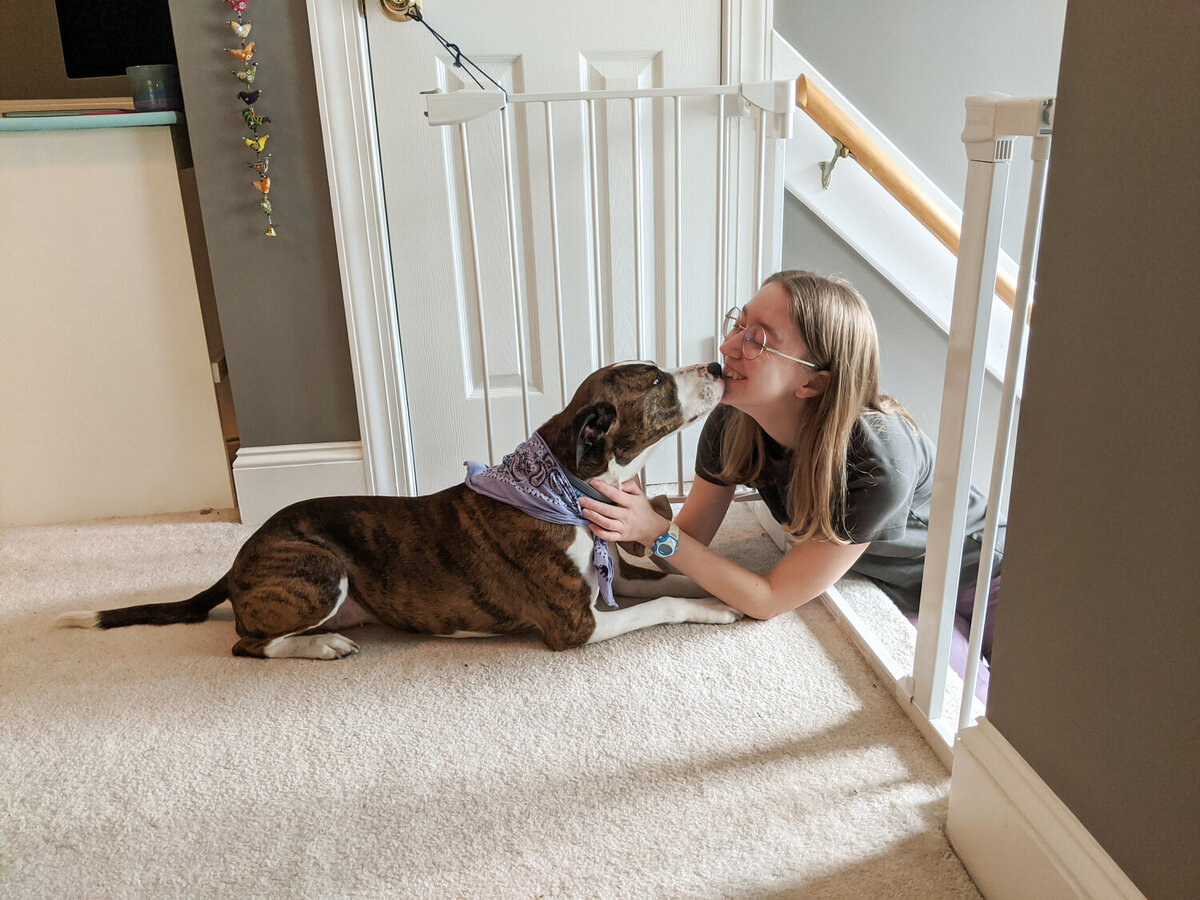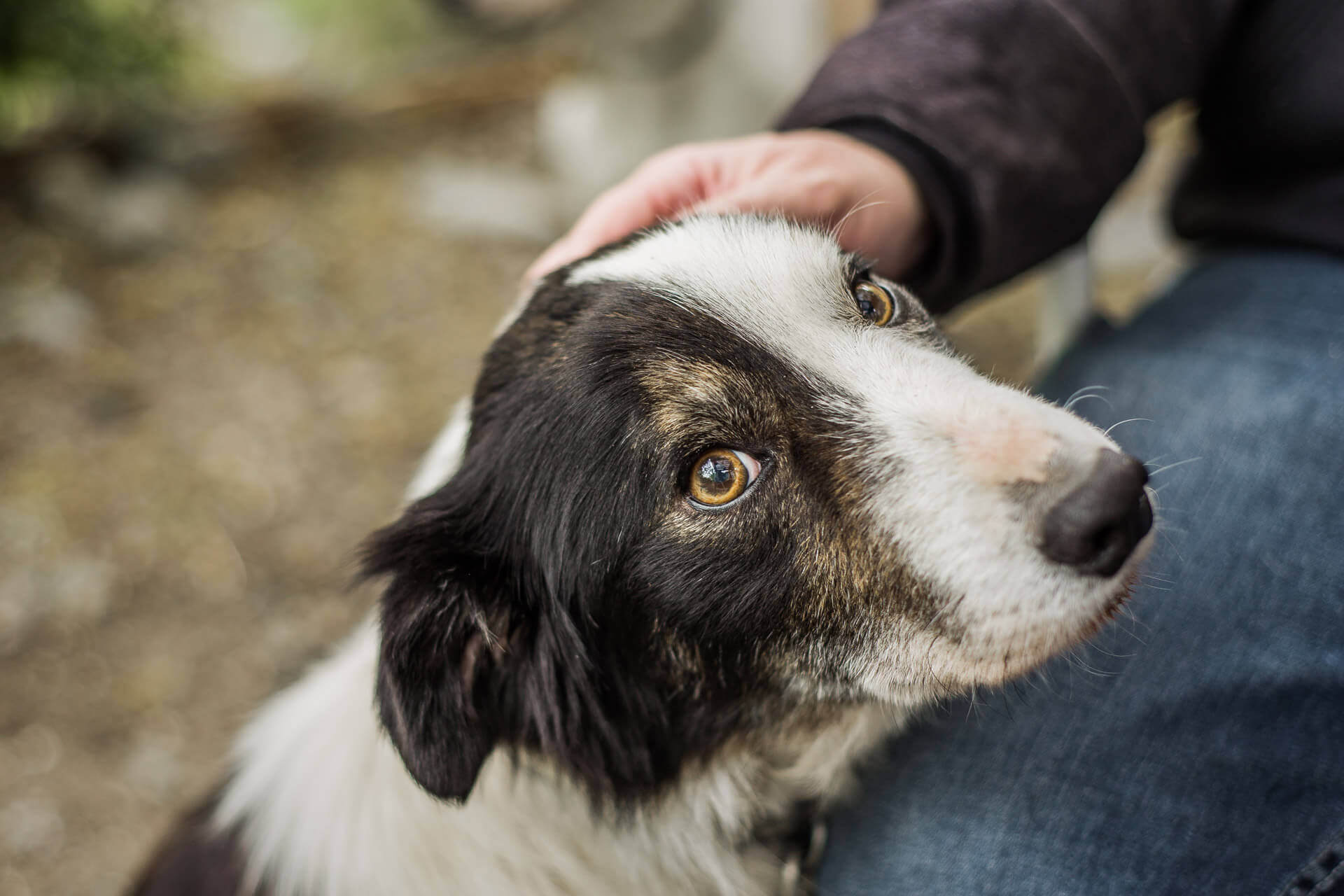Home>Health & Wellness>Behavior & Cognitive Care>How To Stop Anxiety-Induced Panting In Dogs
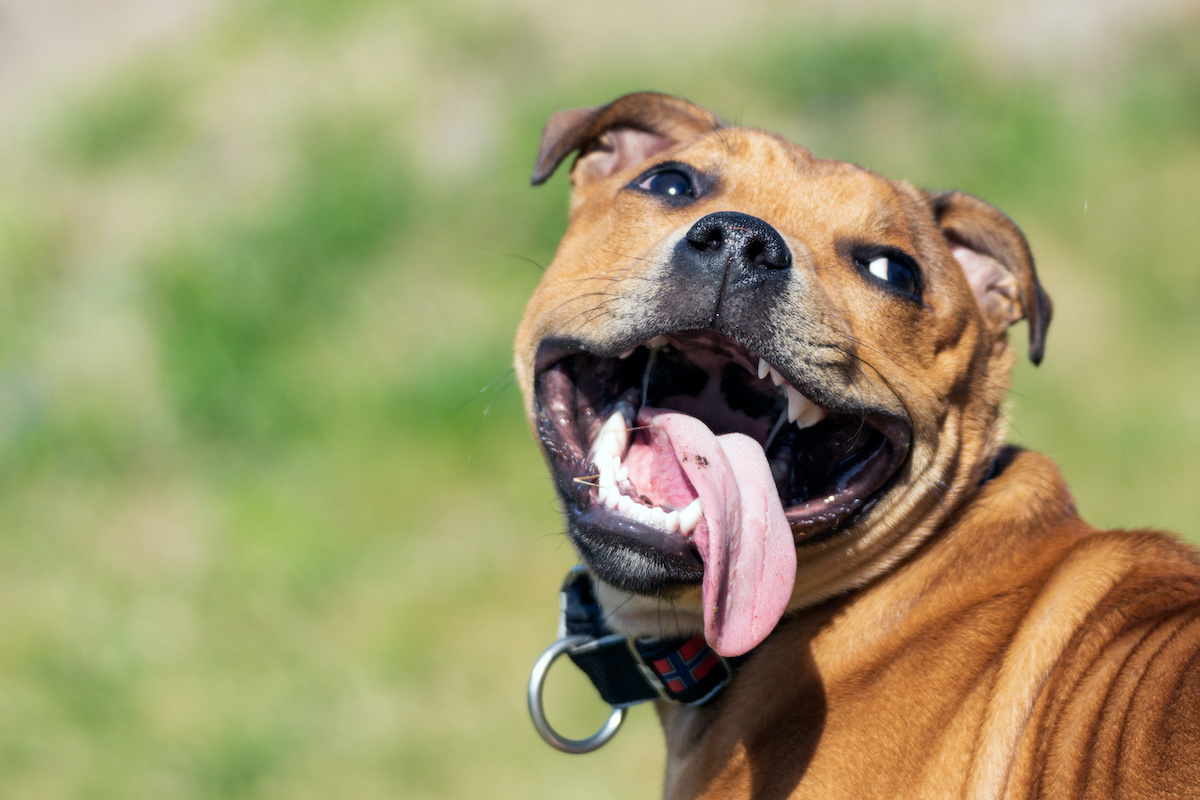

Behavior & Cognitive Care
How To Stop Anxiety-Induced Panting In Dogs
Published: January 30, 2024
Learn effective strategies for managing anxiety-induced panting in dogs with behavior and cognitive care techniques. Stop your dog's panting and help them feel calm and relaxed.
(Many of the links in this article redirect to a specific reviewed product. Your purchase of these products through affiliate links helps to generate commission for Pawsomeoldies.com, at no extra cost. Learn more)
Table of Contents
Introduction
Anxiety-induced panting in dogs is a common manifestation of stress and unease. Just like humans, dogs can experience anxiety in various situations, leading to rapid and shallow breathing, which is often accompanied by other signs of distress such as pacing, trembling, or whining. As a responsible pet owner, it's crucial to recognize the signs of anxiety-induced panting in your furry companion and take proactive steps to alleviate their discomfort.
Understanding the underlying causes of anxiety-induced panting is essential for providing effective care and support for your dog. By identifying potential triggers and implementing appropriate management strategies, you can help your canine friend feel more secure and at ease in their environment. This article will delve into the nuances of anxiety-induced panting in dogs, offering valuable insights and practical tips to help you address this common issue with empathy and expertise.
Read more: How To Stop Dog Anxiety Peeing
Understanding Anxiety-Induced Panting in Dogs
Anxiety-induced panting in dogs is a physiological response to stress and unease. When dogs experience anxiety, whether due to separation, loud noises, unfamiliar environments, or other triggers, their bodies enter a state of heightened alertness. This can lead to rapid, shallow breathing, often accompanied by other visible signs of distress such as restlessness, trembling, and dilated pupils.
It's important to recognize that anxiety-induced panting is not just a physical reaction; it also reflects the emotional turmoil that dogs may be experiencing. Panting serves as a coping mechanism for dogs, helping them regulate their body temperature and manage their emotional state during stressful situations. Understanding this aspect of canine behavior is crucial for providing compassionate care and support for anxious dogs.
Moreover, anxiety-induced panting can have a significant impact on a dog's overall well-being. Prolonged or intense episodes of panting can lead to dehydration, exhaustion, and heightened anxiety levels, further exacerbating the dog's distress. Therefore, it's essential for pet owners to be attentive to their dog's panting behavior and take proactive measures to address the underlying causes of anxiety.
By gaining a deeper understanding of anxiety-induced panting in dogs, pet owners can develop a more empathetic and informed approach to managing their dog's emotional well-being. This includes recognizing the specific triggers that lead to anxiety-induced panting and implementing strategies to create a calming and supportive environment for their furry companions. Ultimately, by acknowledging the significance of anxiety-induced panting and its impact on dogs, pet owners can play a pivotal role in promoting their pets' mental and emotional health.
Identifying Triggers for Anxiety in Dogs
Identifying the triggers for anxiety in dogs is a crucial step in addressing and managing anxiety-induced panting. Dogs, like humans, can experience anxiety due to various factors, and recognizing these triggers is essential for providing targeted support and intervention. Here are some common triggers for anxiety in dogs:
-
Separation: Many dogs experience separation anxiety when left alone for extended periods. This can lead to distressing behaviors such as excessive panting, pacing, and destructive chewing. Understanding your dog's response to being separated from their human family members can help in devising strategies to alleviate their anxiety.
-
Loud Noises: Dogs are often sensitive to loud or sudden noises, such as thunderstorms, fireworks, or construction sounds. These auditory stimuli can trigger intense anxiety and panting in dogs. Recognizing your dog's reaction to loud noises can guide you in creating a safe and comforting environment during such events.
-
Unfamiliar Environments: Introducing dogs to new or unfamiliar environments, such as crowded public spaces or unfamiliar homes, can provoke anxiety. Dogs may exhibit panting, trembling, or avoidance behaviors when confronted with unfamiliar surroundings. Identifying these triggers can help in gradually acclimating your dog to new environments and reducing their anxiety response.
-
Social Interactions: Some dogs may experience anxiety in social situations, especially when encountering unfamiliar people or animals. This can manifest as panting, restlessness, or defensive behaviors. Understanding your dog's social triggers can aid in managing their interactions and providing reassurance during challenging social encounters.
-
Routine Changes: Dogs thrive on routine and predictability. Any significant changes to their daily routine, such as alterations in feeding times, walking schedules, or living arrangements, can trigger anxiety. Recognizing how your dog responds to changes in their routine can help in minimizing their anxiety-induced panting and promoting a sense of stability.
By keenly observing your dog's behavior and reactions in various situations, you can gain valuable insights into the specific triggers that lead to anxiety-induced panting. This awareness forms the foundation for implementing targeted interventions and creating a supportive environment that addresses your dog's unique anxiety triggers. Ultimately, by identifying and understanding these triggers, pet owners can take proactive steps to mitigate their dog's anxiety and promote a sense of security and well-being.
Tips for Managing Anxiety-Induced Panting
Understanding how to effectively manage anxiety-induced panting in dogs is essential for promoting their emotional well-being and overall quality of life. By implementing thoughtful strategies and interventions, pet owners can help alleviate their dog's distress and create a more calming and supportive environment. Here are practical tips for managing anxiety-induced panting in dogs:
-
Create a Safe Space: Designate a quiet and comfortable area in your home where your dog can retreat when feeling anxious. This space should be equipped with familiar bedding, toys, and comforting items to provide a sense of security during stressful episodes.
-
Regular Exercise: Engage your dog in regular physical activity and mental stimulation to help reduce overall anxiety levels. Exercise promotes the release of endorphins, which can have a calming effect on your dog's emotional state and reduce the likelihood of anxiety-induced panting.
-
Calming Techniques: Explore calming techniques such as gentle massage, soothing music, or aromatherapy to help relax your dog during periods of heightened anxiety. These techniques can provide a sense of comfort and reassurance, helping to alleviate panting and promote relaxation.
-
Positive Reinforcement: Use positive reinforcement techniques to encourage calm behavior in your dog. Rewarding moments of relaxation and composure can help reinforce a sense of security and reduce anxiety-induced panting over time.
-
Consistent Routine: Establish a consistent daily routine for your dog, including regular feeding times, exercise schedules, and bedtime rituals. Predictability and structure can help reduce anxiety and provide a sense of stability for your furry companion.
-
Behavioral Training: Consider enrolling your dog in behavioral training classes or working with a professional trainer to address underlying anxiety issues. Training can help your dog develop coping mechanisms and build confidence in managing stressful situations.
-
Comforting Presence: During anxiety-inducing events, such as thunderstorms or fireworks, provide a comforting and reassuring presence for your dog. Your calm demeanor and supportive presence can help alleviate their distress and reduce panting.
-
Veterinary Consultation: If your dog's anxiety-induced panting persists or significantly impacts their well-being, consult with a veterinarian. They can provide valuable insights and recommend appropriate interventions, including behavioral therapies or medication if necessary.
By incorporating these tips into your approach to managing anxiety-induced panting in dogs, you can play a proactive role in supporting your furry companion's emotional health and well-being. Each dog is unique, so it's important to observe and adapt these strategies based on your dog's individual needs and responses. With patience, empathy, and a tailored approach, you can help your dog navigate anxiety-induced panting with greater ease and comfort.
Creating a Calming Environment for Your Dog
Creating a calming environment for your dog is essential for mitigating anxiety-induced panting and promoting a sense of security and tranquility. By strategically designing your dog's living space and daily surroundings, you can significantly influence their emotional well-being and overall comfort. Here are practical steps to create a soothing environment for your furry companion:
Designated Safe Space
Designate a specific area in your home as a safe haven for your dog. This space should be secluded from high-traffic areas and equipped with familiar bedding, toys, and comforting items that hold positive associations for your dog. By providing a designated safe space, you offer your dog a retreat where they can seek solace during moments of anxiety.
Ambient Comfort
Consider the ambient elements within your dog's environment. Soft, diffused lighting and gentle background sounds, such as calming music or white noise, can contribute to a serene atmosphere. Additionally, maintaining a comfortable room temperature and ensuring adequate ventilation can enhance your dog's overall comfort and relaxation.
Aromatherapy and Pheromone Diffusers
Explore the use of aromatherapy and pheromone diffusers to create a calming ambiance for your dog. Certain scents, such as lavender and chamomile, are known for their soothing properties and can help alleviate stress and anxiety in dogs. Similarly, pheromone diffusers emit synthetic pheromones that mimic those produced by nursing mother dogs, promoting a sense of security and well-being.
Visual and Auditory Distractions
Introduce visual and auditory distractions to engage and relax your dog. Calming visual stimuli, such as aquariums or strategically placed window perches, can provide gentle entertainment and diversion. Similarly, soothing music or nature sounds can help mask disruptive noises and create a tranquil auditory environment for your dog.
Read more: How To Stop An Anxiety Attack In Dogs
Consistent Routine and Predictability
Establishing a consistent daily routine for your dog can contribute to a calming environment. Predictable feeding times, exercise schedules, and bedtime rituals provide a sense of structure and security for your dog, reducing uncertainty and anxiety. Consistency in routine fosters a reassuring environment that supports your dog's emotional well-being.
By implementing these strategies, you can cultivate a calming environment that nurtures your dog's emotional health and helps alleviate anxiety-induced panting. Each dog is unique, so it's important to observe your dog's responses and adjust the environment based on their individual preferences and comfort. With a thoughtful and tailored approach, you can create a tranquil and supportive space where your dog feels safe, secure, and at ease.
Seeking Professional Help for Your Anxious Dog
Seeking professional help for your anxious dog is a proactive and compassionate step towards addressing their emotional well-being. While pet owners play a pivotal role in creating a supportive environment and implementing management strategies, the expertise of veterinary professionals and animal behaviorists can provide invaluable insights and tailored interventions to alleviate anxiety-induced panting in dogs.
When considering professional help for your anxious dog, it's essential to seek guidance from a qualified veterinarian who has experience in behavioral issues. A thorough physical examination can help rule out any underlying medical conditions that may contribute to your dog's anxiety. Additionally, discussing your dog's behavioral patterns and anxiety triggers with the veterinarian can offer valuable diagnostic clues and inform the development of a comprehensive treatment plan.
In cases where anxiety-induced panting significantly impacts your dog's quality of life and overall well-being, a referral to a certified animal behaviorist or a veterinary behaviorist may be recommended. These professionals specialize in understanding and addressing complex behavioral issues in animals, including anxiety disorders. Through detailed behavioral assessments and personalized behavior modification plans, they can offer targeted interventions to help your dog manage their anxiety more effectively.
Behavioral professionals may employ various techniques, such as desensitization and counterconditioning, to help your dog overcome specific anxiety triggers and reduce their panting episodes. They can also provide guidance on implementing environmental modifications and creating structured routines that promote a sense of security and predictability for your dog.
In some cases, medication may be considered as part of a comprehensive treatment approach for anxiety-induced panting. Veterinary behaviorists and veterinarians can assess the need for pharmacological interventions and prescribe medications that can help alleviate your dog's anxiety and reduce panting episodes. It's important to note that medication should always be used in conjunction with behavioral interventions and under the guidance of a qualified professional.
Furthermore, professional guidance extends beyond direct interventions for your dog. Behavioral professionals can offer valuable support and education to pet owners, empowering them with the knowledge and skills to effectively manage their dog's anxiety on a day-to-day basis. This may include guidance on implementing positive reinforcement techniques, recognizing subtle signs of anxiety, and fostering a supportive home environment that promotes emotional well-being.
By seeking professional help for your anxious dog, you demonstrate a commitment to understanding and addressing their emotional needs with expertise and empathy. Collaborating with veterinary professionals and behavioral specialists can significantly enhance your dog's quality of life and contribute to a harmonious and fulfilling relationship between you and your beloved canine companion.
Conclusion
In conclusion, anxiety-induced panting in dogs is a multifaceted manifestation of emotional distress that warrants thoughtful attention and proactive intervention from pet owners. By understanding the underlying causes of anxiety-induced panting and identifying specific triggers that provoke this response in dogs, pet owners can play a pivotal role in promoting their canine companions' emotional well-being. Creating a supportive and calming environment, implementing targeted management strategies, and seeking professional guidance when necessary are essential components of a comprehensive approach to addressing anxiety-induced panting in dogs.
It is crucial for pet owners to recognize that anxiety-induced panting is not merely a physical reaction; it reflects the emotional turmoil that dogs may experience in response to various stressors. By acknowledging the significance of anxiety-induced panting and its impact on dogs, pet owners can cultivate a deeper sense of empathy and understanding, fostering a stronger bond with their furry companions.
The tips for managing anxiety-induced panting, including creating a safe space, regular exercise, calming techniques, positive reinforcement, consistent routines, behavioral training, comforting presence, and veterinary consultation, provide a holistic framework for addressing anxiety in dogs. These strategies, when tailored to the individual needs of each dog, can significantly alleviate anxiety-induced panting and promote a sense of security and well-being.
Furthermore, the creation of a calming environment for dogs, encompassing designated safe spaces, ambient comfort, aromatherapy and pheromone diffusers, visual and auditory distractions, and consistent routines, serves as a foundational element in mitigating anxiety-induced panting and nurturing a tranquil living space for dogs.
Seeking professional help for anxious dogs, including consultation with veterinarians and certified animal behaviorists, offers specialized insights and interventions to address complex anxiety issues. The collaborative approach between pet owners and professionals can lead to tailored behavior modification plans, environmental modifications, and, when necessary, the consideration of pharmacological interventions to alleviate anxiety-induced panting and enhance the overall well-being of dogs.
In essence, by embracing a comprehensive and empathetic approach to understanding and addressing anxiety-induced panting in dogs, pet owners can foster an environment of emotional support, security, and comfort for their beloved canine companions. Through attentive observation, thoughtful intervention, and a deep commitment to their dogs' emotional health, pet owners can make a profound difference in mitigating anxiety-induced panting and nurturing a harmonious and fulfilling relationship with their furry friends.


